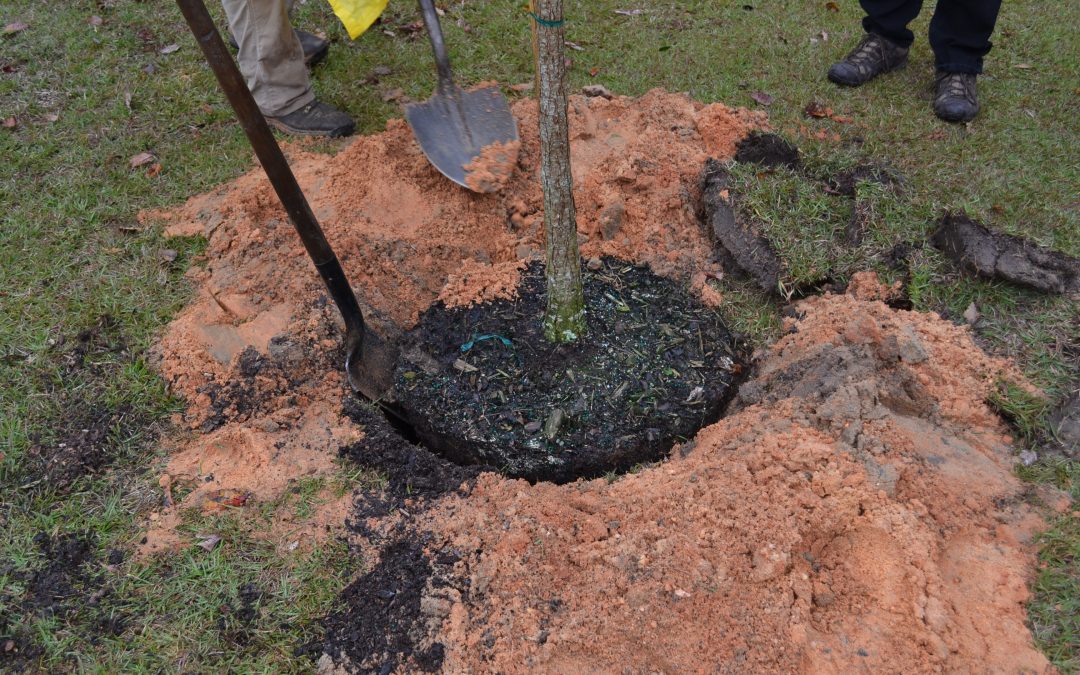
Video: Tree Planting Basics
Our winter season is a good time to install many trees and shrubs. Here is a basic review of a few planting practices to make sure that your new plants get off to the good start.

Our winter season is a good time to install many trees and shrubs. Here is a basic review of a few planting practices to make sure that your new plants get off to the good start.
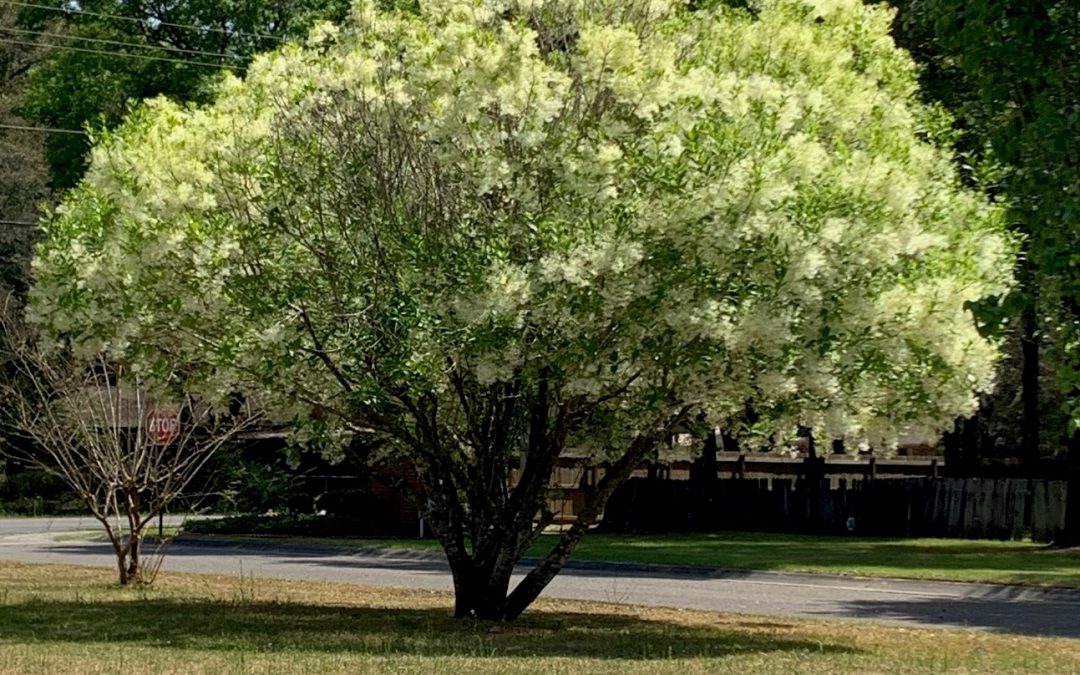
The best time to plant a tree is twenty years ago. The second best time is Arbor Day 2024. Florida recognizes the event on the third Friday in January, so the next one is January 19, 2024.
Arbor Day is an annual observance that celebrates the role of trees in our lives and promotes tree planting and care. As a formal holiday, it was first observed on April 10, 1872 in the state of Nebraska. Today, every state and many countries join in the recognition of trees impact on people and the environment.
Trees are the longest living organisms on the planet and one of the earth’s greatest natural resources. They keep our air supply clean, reduce noise pollution, improve water quality, help prevent erosion, provide food and building materials, create shade, and help make our landscapes look beautiful. A single tree produces approximately 260 pounds of oxygen per year. That means two mature trees can supply enough oxygen annually to support a family of four.
The idea for Arbor Day in the U.S. began with Julius Sterling Morton. In 1854 he moved from Detroit to the area that is now the state of Nebraska. J. Sterling Morton was a journalist and nature lover who noticed that there were virtually no trees in Nebraska. He wrote and spoke about environmental stewardship and encouraged everyone to plant trees. Morton emphasized that trees were needed to act as windbreaks, to stabilize the soil, to provide shade, as well as, fuel and building materials for the early pioneers to prosper in the developing state.
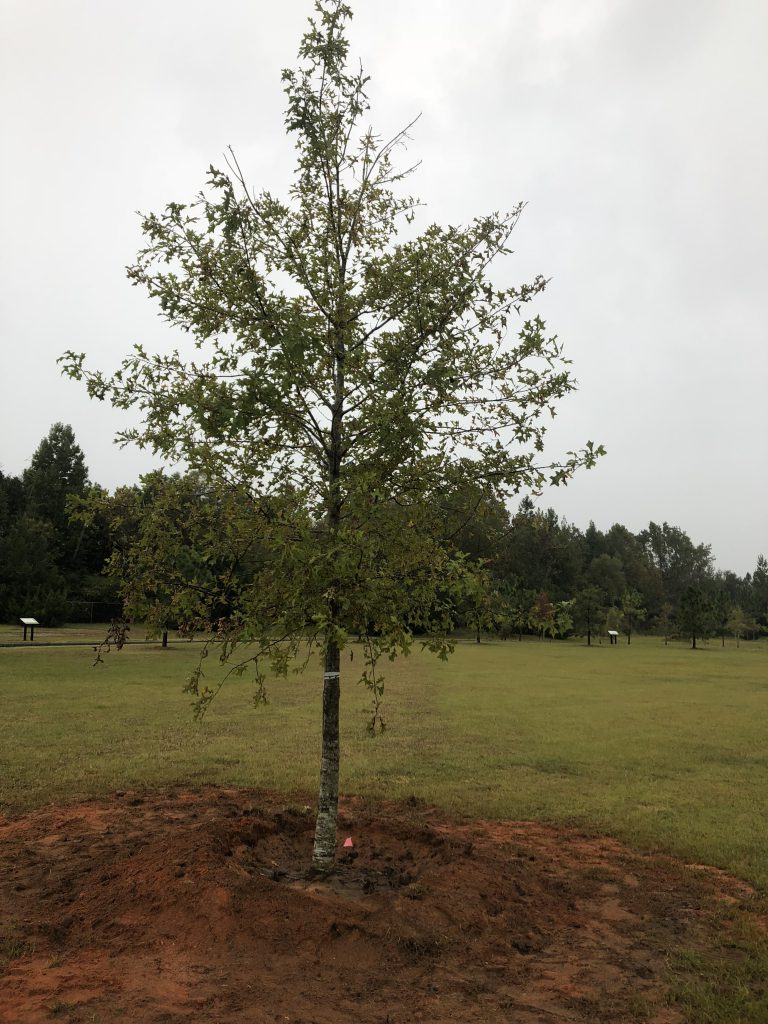
In 1872, The State Board of Agriculture accepted a resolution by J. Sterling Morton “to set aside one day to plant trees, both forest and fruit.” On April 10, 1872 one million trees were planted in Nebraska in honor of the first Arbor Day. Shortly after the 1872 observance, several other states passed legislation to observe Arbor Day. By 1920, 45 states and territories celebrated Arbor Day. Richard Nixon proclaimed the last Friday in April as National Arbor Day during his presidency in 1970.
Today, all 50 states in the U.S. have an official Arbor Day, usually at a time of year that has the correct climatological conditions for planting trees. For Florida, the ideal tree planting time is January, so Florida’s Arbor Day is celebrated on the third Friday of the month. Similar events are observed throughout the world. In Israel it is the Tu B Shevat (New Year for Trees). Germany has Tag des Baumes. Japan and Korea celebrate an entire week in April. Even, Iceland one of the most treeless countries in the world observes Student’s Afforestation Day.
The trees planted on Arbor Day show a concern for future generations. The simple act of planting a tree represents a belief that the tree will grow and provide wood products, wildlife habitat erosion control, shelter from wind and sun, beauty, and inspiration for ourselves and our children.
“It is well that you should celebrate your Arbor Day thoughtfully, for within your lifetime the nation’s need of trees will become serious. We of an older generation can get along with what we have, though with growing hardship; but in your full manhood and womanhood you will want what nature once so bountifully supplied and man so thoughtlessly destroyed; and because of that want you will reproach us, not for what we have used, but for what we have wasted.”
~Theodore Roosevelt, 1907 Arbor Day Message
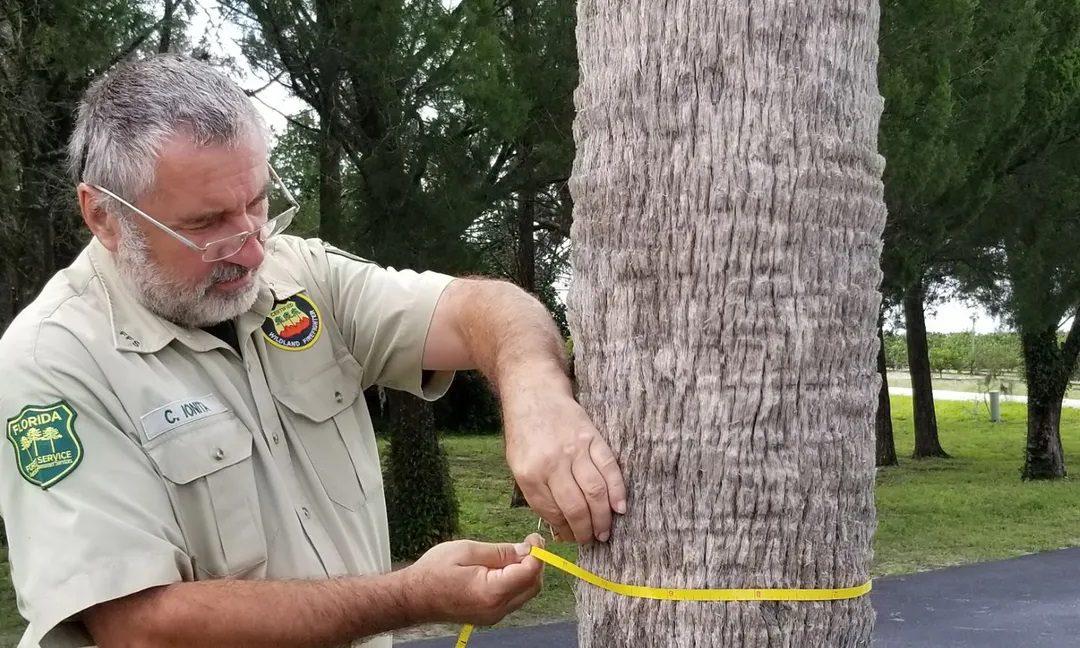
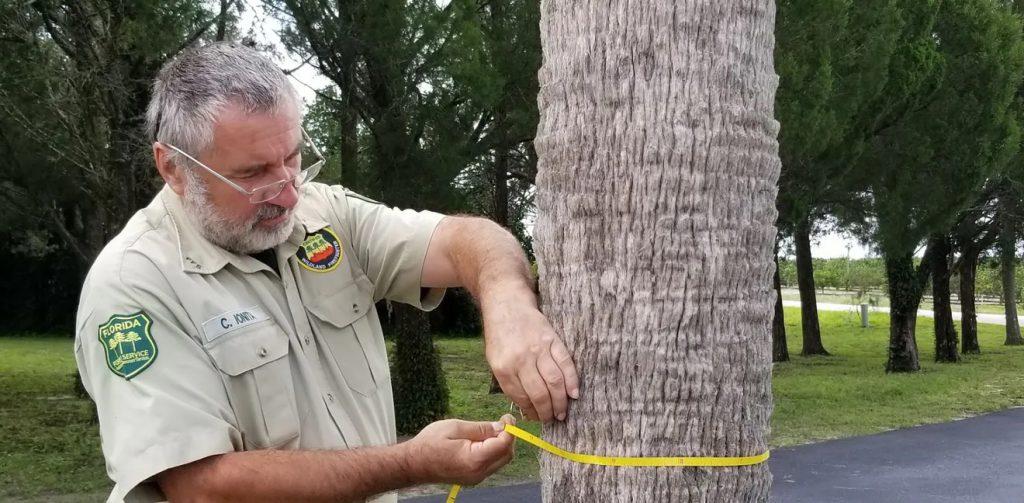
Humans love to measure and rank things. Whether it’s the tallest, the widest, or the most of something, we want to know about it, rank it, and, of course, brag about it if it’s ours. The biggest pumpkin, cheeseburger, truck tires, and so on. Gardeners and plant people are no exception. Actually, when you combine the pride of something you’ve grown with some type of measurement or rank of grandeur, it drives even more competition. Hence, fairs! So, it’s no surprise that there is an official rank of largest tree for each state. These large specimens are known as “Champion Trees” and every landowner I know of would love to have one on their property.
The idea of recognizing Champion Trees goes back nearly a century when the American Forestry Association, now known simply as American Forests, launched a campaign to engage the public in forestry activities. To tap into our desire to rank things and compete, the campaign encouraged a competition to find the largest specimens of selected trees. American Forests still maintains a registry of the national Champion Trees and their current goal of the program is to help people identify tree biodiversity and foster a desire to preserve and protect trees.
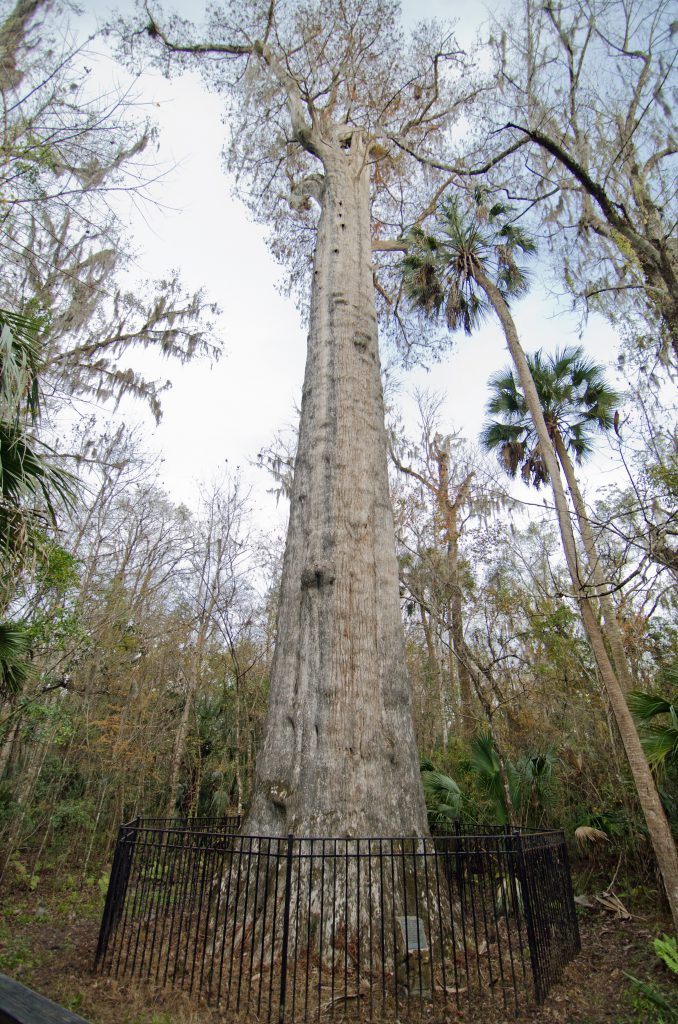
In Florida, the Division of Forestry (DOF), part of the Florida Department of Agriculture and Consumer Services (FDACS), maintains a statewide registry of these Champion Trees. According to FDACS’s Florida Champion Trees website, the largest native tree in the state is a bald cypress (Taxodium distichum) with a trunk measuring 537 inches in circumference (nearly 15 feet wide), stands 101 feet tall, and has a crown spread of 49 feet. That’s a big ol’ cypress tree! Just in case you were wondering, the smallest Champion Tree is a corkwood (Leitneria floridana) with a trunk measuring nine inches in circumference (almost three feet in diameter), 17 feet tall, and a crown spread of eight feet. That is a big ol’ corkwood!
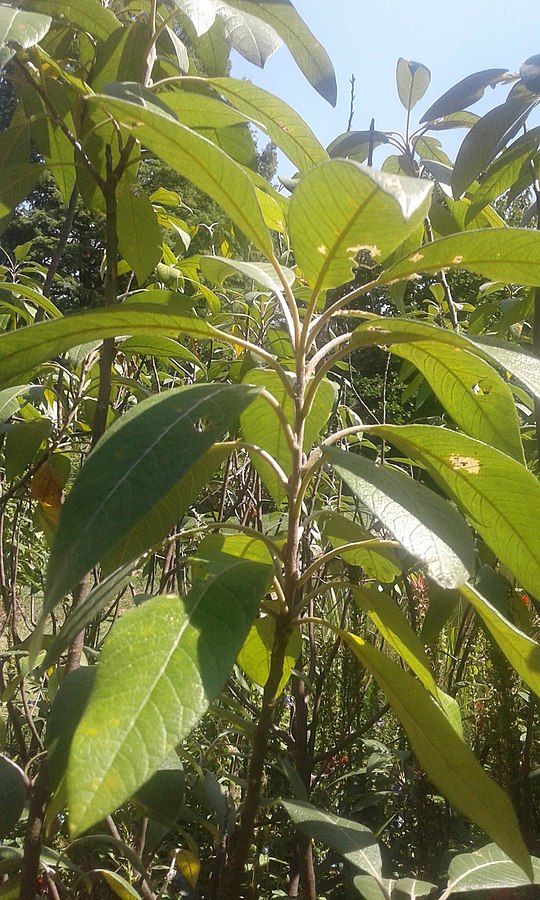
Now comes the exciting part. The Florida Champion Trees website (https://www.fdacs.gov/Forest-Wildfire/Our-Forests/Florida-Champion-Trees) has the entire list of trees for you to peruse and includes a list of trees that are yet to have a champion specimen designated. There is a nomination form that, when submitted, will prompt a visit by a County Forester with DOF who will confirm the tree’s measurements. If all checks out, your tree could be a champion!
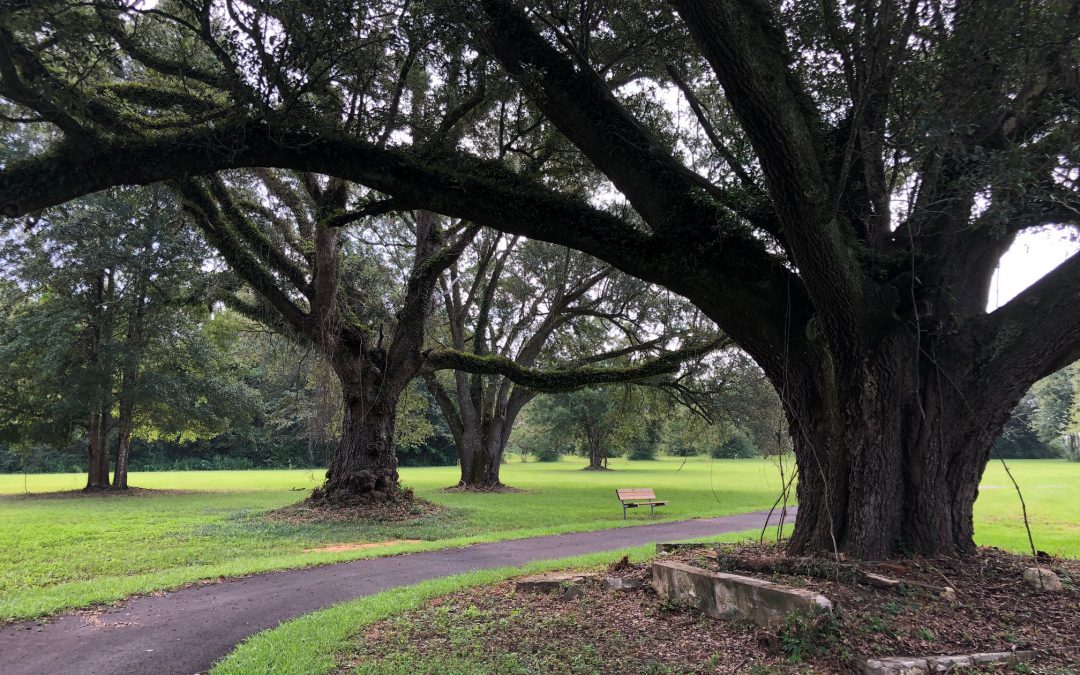
The best time to plant a tree is twenty years ago. The second-best time is Arbor Day. Florida recognizes the event on the third Friday in January but planting any time before spring will establish a tree quickly.
Arbor Day is an annual observance that celebrates the role of trees in our lives and promotes tree planting and care. As a formal holiday, it was first observed on April 10, 1872, in the state of Nebraska. Today, every state and many countries join in the recognition of trees impact on people and the environment.
Trees are the longest living organisms on the planet and one of the earth’s greatest natural resources. They keep our air supply clean, reduce noise pollution, improve water quality, help prevent erosion, provide food and building materials, create shade, and help make our landscapes look beautiful. A single tree produces approximately 260 pounds of oxygen per year. That means two mature trees can supply enough oxygen annually to support a family of four.
The idea for Arbor Day in the U.S. began with Julius Sterling Morton. In 1854 he moved from Detroit to the area that is now the state of Nebraska. J. Sterling Morton was a journalist and nature lover who noticed that there were virtually no trees in Nebraska. He wrote and spoke about environmental stewardship and encouraged everyone to plant trees. Morton emphasized that trees were needed to act as windbreaks, to stabilize the soil, to provide shade, as well as fuel and building materials for the early pioneers to prosper in the developing state.
In 1872, The State Board of Agriculture accepted a resolution by J. Sterling Morton “to set aside one day to plant trees, both forest and fruit.” On April 10, 1872, one million trees were planted in Nebraska in honor of the first Arbor Day. Shortly after the 1872 observance, several other states passed legislation to observe Arbor Day. By 1920, 45 states and territories celebrated Arbor Day. Richard Nixon proclaimed the last Friday in April as National Arbor Day during his presidency in 1970.
Today, all 50 states in the U.S. have official Arbor Day, usually at a time of year that has the correct climatological conditions for planting trees. For Florida, the ideal tree planting time is January, so Florida’s Arbor Day is celebrated on the third Friday of the month. Similar events are observed throughout the world. In Israel it is the Tu B Shevat (New Year for Trees). Germany has Tag des Baumes. Japan and Korea celebrate an entire week in April. Even Iceland, one of the treeless countries in the world observes Student’s Afforestation Day.
The trees planted on Arbor Day show a concern for future generations. The simple act of planting a tree represents a belief that the tree will grow and someday provide wood products, wildlife habitat, erosion control, shelter from wind and sun, beauty, and inspiration for ourselves and our children.
“It is well that you should celebrate your Arbor Day thoughtfully, for within your lifetime the nation’s need of trees will become serious. We of an older generation can get along with what we have, though with growing hardship; but in your full manhood and womanhood you will want what nature once so bountifully supplied and man so thoughtlessly destroyed; and because of that want you will reproach us, not for what we have used, but for what we have wasted.”
~Theodore Roosevelt, 1907 Arbor Day Message
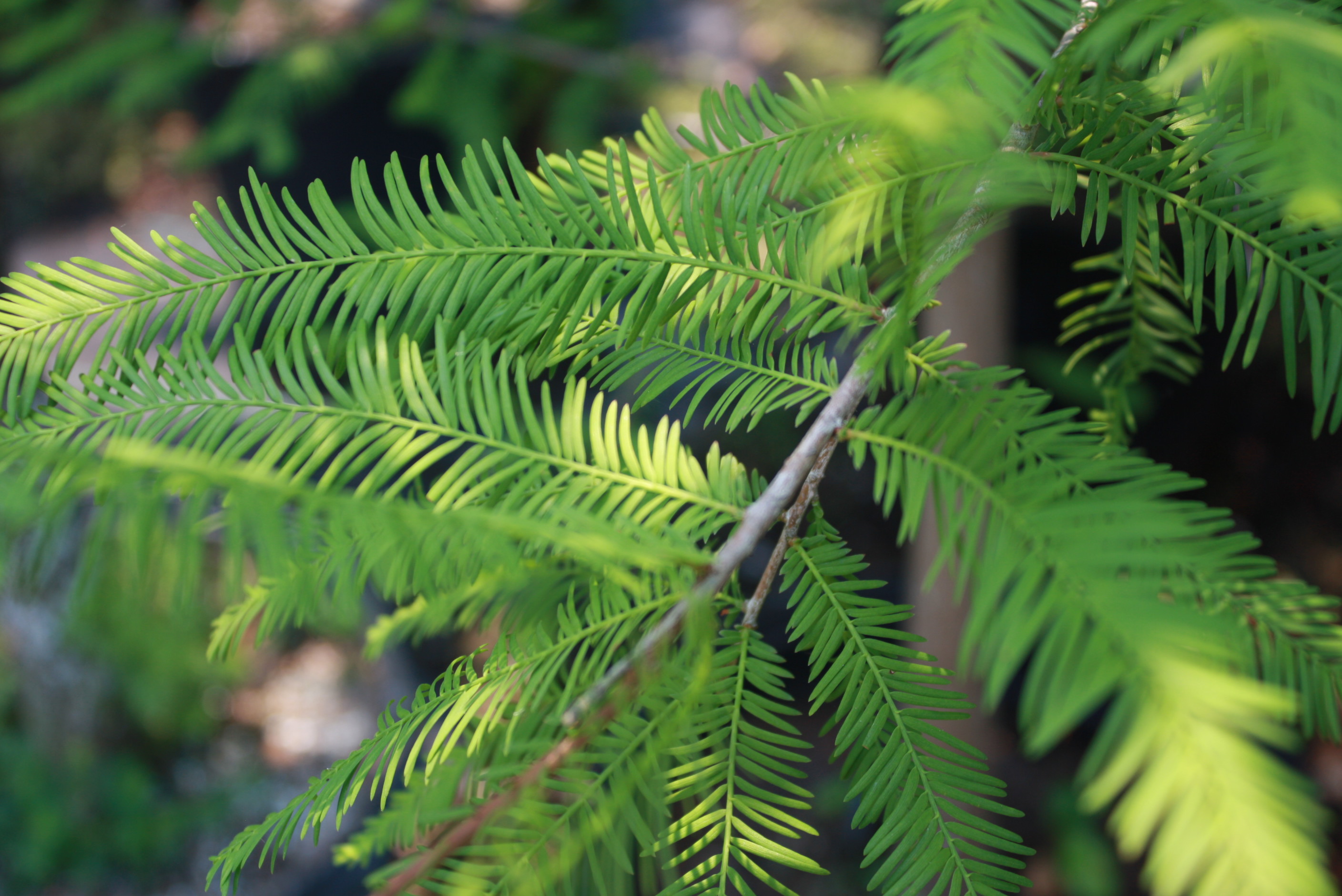
Lately, to survive in Panhandle landscapes, plants must be able to tolerate extremes. Summertime temperatures over 100 degrees F, hurricane force winds up to 150 mph, deluges of 1’ of rain in a single day, spring and fall month-long droughts, and the wild winter weather swings we’re experiencing right now. That’s quite a tall order for most plants to bear, however one of our best native trees handles all of the above conditions with relative ease, the stately Bald Cypress (Taxodium distichum). Though Bald Cypress primarily inhabits flatwood “dome” swamps and areas along the periodically flooded edges of waterways and other wetlands and most folks think of it as just “water tree”, the species is more than capable of handling anything Florida’s climate can throw at it, including thriving in home landscapes.
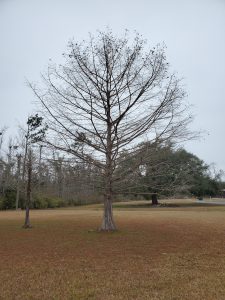
Bald Cypress in mid-January. Notice the excellent branching structure and the buttressed lower trunk. Photo courtesy Daniel Leonard.
While there are lots of pretty trees in the Panhandle’s natural areas, not many of them possess the longevity, adaptability and well-behaved nature that makes Bald Cypress a great landscape tree. Bald Cypress are capable of living for hundreds of years and grow steadily to a normal landscape height of 50-60’, truly perfect for a specimen shade tree. The species also possesses a strong, wide spreading root system and a special above ground root adaptation, known colloquially as “knees”, that enable Cypress to reach deep to outlast droughts, grow unfazed even when the water rises, inhabit many different soil types, and resist hurricane force winds. While some homeowners object to the presence of Cypress knees in their yard, as the above ground structures can damage mower blades and make for uneven terrain, I’ve found an easy solution is to simply keep the area under the tree’s canopy mulched and forgo mowing there altogether. It looks nice and means less grass to cut!
Bald Cypress isn’t just a big, tough, adaptable tree, it’s also gorgeous. The bright green, finely cut, featherlike leaves give the trees an airy appearance in the spring and summer, nicely offsetting common coarse textured yard trees like Magnolia, Sycamore, Red Maple, and others. However, it is in the fall and winter when Bald Cypress really shines. Though Florida is not known for its fall foliage, Cypress is a notable exception! When the weather gets cool, Bald Cypress leaves transition from green to a yellowish orange before finally arriving at a beautifully unique, rusty, orange-brown color. There isn’t another species out there with a similar show. The foliage holds deep into winter before finally falling to reveal the attractive branching structure, sweeping buttressed lower trunk, and peely gray bark underneath, completing the four-season show.
In addition to being a near perfect landscape tree, Bald Cypress embodies much of what folks admire about life in the South, living the slow life near the water and enduring everything that’s thrown at it with grace and strength. Other than possibly the Live Oak, Bald Cypress is the tree that comes to mind first when I think about the tree that most represents where we come from. From their majestic, buttressed trunks, to the Spanish Moss that hangs loose from their limbs, to the slow, dark water than meanders nearby, the species is iconically Southern. When looking for an impossibly tough, adaptable, and attractive tree, one could do a whole lot worse than Bald Cypress.
If you have any questions about Bald Cypress, other landscape tree options, or any horticultural topic, please reach out to your local UF/IFAS County Extension Office. Happy gardening!
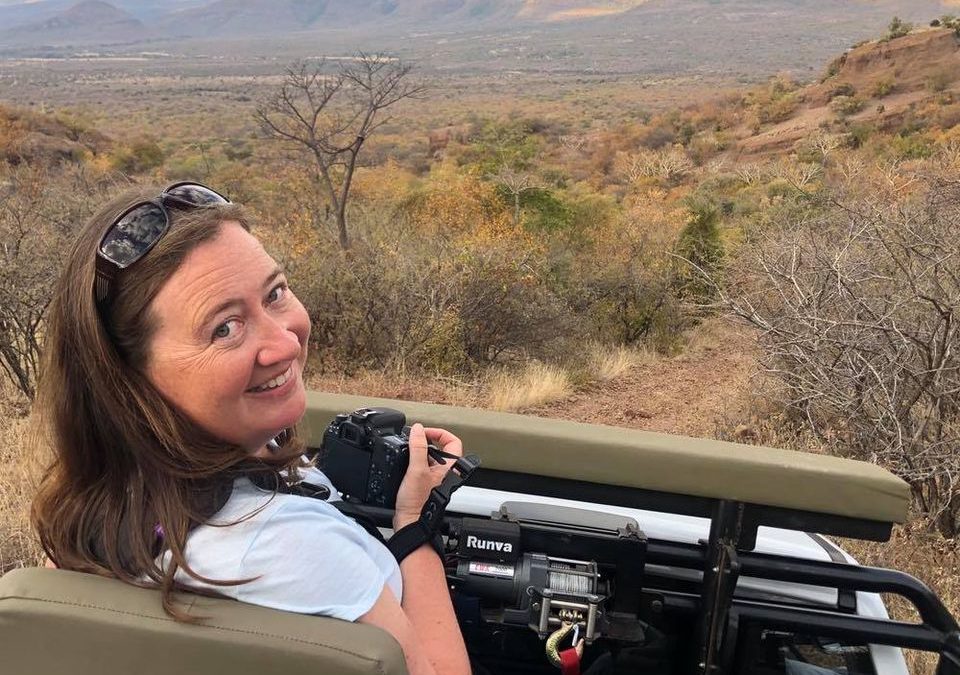
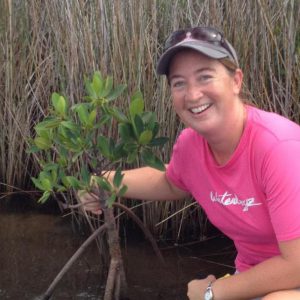 Carrie Stevenson is the Coastal Sustainability Agent for the UF/IFAS Escambia County Extension Office and has been with the organization almost 17 years. Her educational outreach programs focus on living sustainably within a vulnerable coastal ecosystem. She helps clientele better understand how to protect and preserve local landscape and water resources, wisely use our abundant rainfall and sunlight, and prepare and mitigate for flooding, coastal storms and climate impacts.
Carrie Stevenson is the Coastal Sustainability Agent for the UF/IFAS Escambia County Extension Office and has been with the organization almost 17 years. Her educational outreach programs focus on living sustainably within a vulnerable coastal ecosystem. She helps clientele better understand how to protect and preserve local landscape and water resources, wisely use our abundant rainfall and sunlight, and prepare and mitigate for flooding, coastal storms and climate impacts.
Growing up an avid reader and science junkie, a young Carrie aspired to find a career that allowed her to “be outdoors and wear jeans,” and in college sought to become a science writer. After graduation and a move to Pensacola, she found work as a field-based environmental specialist with the Florida Department of Environmental Protection (FDEP). While always more of an animal person than a plant person, her training with FDEP instilled a lifelong love of wetlands, as she spent her days tromping through the swamps, wet prairies, and creeks of northwest Florida. After joining UF IFAS Extension, she spent 6 years as a Florida Yards & Neighborhoods Agent before switching to Coastal Sustainability. Her expertise and articles focus on native plants, coastal habitats, wetlands, stormwater, and climate issues.
 A native of Mississippi, Carrie has lived with her husband in Pensacola since 1999. Carrie earned her master’s degree in Biology/Coastal Zone Studies from the University of West Florida (Pensacola) and an undergraduate degree in Marine Science from Samford University (Birmingham, Alabama). A lifelong outdoors enthusiast, she enjoys biking, standup paddleboarding, and traveling to national parks with her family. She also has many favorite international outdoor experiences, ranging from hiking rainforests with an enthnobotanist in Belize to exploring the thorny scrub of South Africa. Carrie is the proud mom of an Eagle Scout and leads her daughter’s Girl Scout troop. She is a Fellow in the Natural Resources Leadership Institute (NRLI), past president of the Florida Association of Natural Resource Extension Professionals (FANREP), and member of IMPACT 100 Pensacola Bay.
A native of Mississippi, Carrie has lived with her husband in Pensacola since 1999. Carrie earned her master’s degree in Biology/Coastal Zone Studies from the University of West Florida (Pensacola) and an undergraduate degree in Marine Science from Samford University (Birmingham, Alabama). A lifelong outdoors enthusiast, she enjoys biking, standup paddleboarding, and traveling to national parks with her family. She also has many favorite international outdoor experiences, ranging from hiking rainforests with an enthnobotanist in Belize to exploring the thorny scrub of South Africa. Carrie is the proud mom of an Eagle Scout and leads her daughter’s Girl Scout troop. She is a Fellow in the Natural Resources Leadership Institute (NRLI), past president of the Florida Association of Natural Resource Extension Professionals (FANREP), and member of IMPACT 100 Pensacola Bay.